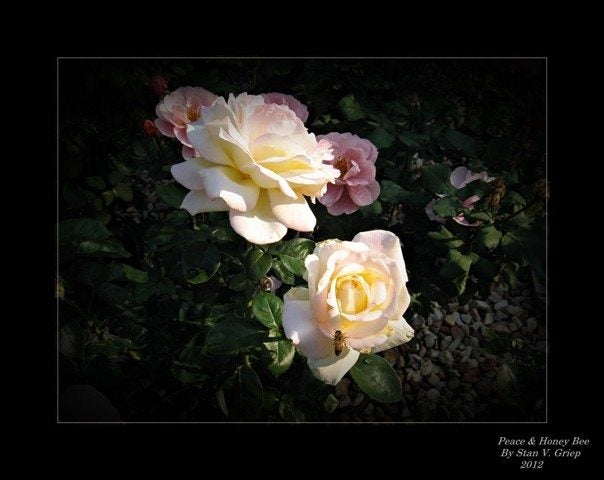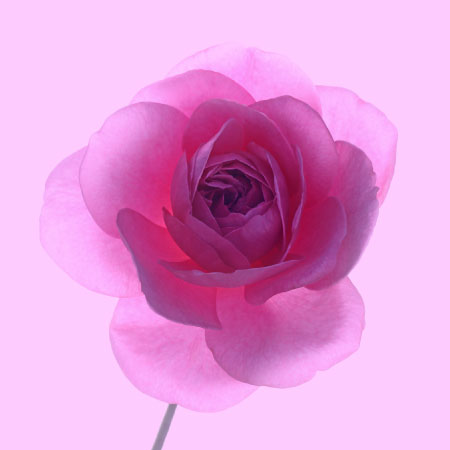Tips On Photographing Roses & Flowers


I am truly an amateur photographer; however, I have held my own in various photography contests, shows and related events when it comes to first-place ribbons and awards. In this article, I will be sharing some of my thoughts and processes of taking pictures of the roses and flowers, which I love.
When to Take Pictures of Flowers
My favorite time to take pictures of roses and flowers is in the morning, before noon and before the heat of the day. The blooms seem refreshed after the cooler temperatures of the evening and perhaps even a bit of overnight rain that has provided a cool drink of water for the rose bushes and plants. The lighting of the morning sun is best as it does not create bright spots upon the blooms that cause the texture of the petals to be lost. This is especially true on the red and white blooms, as they seem to either bleed out their color (worse in the case of red blooms), or create a flash effect upon the petals in the case of white and sometimes yellow blooms.
How to Take Picture of Flowers
When taking photos of roses and flowers, there are not only various angles of view, lighting concerns and bloom forms to take into consideration. There is the background for the shot; the all-important background is not to be taken lightly and most certainly not overlooked. A bloom set against its own plant's rich foliage will usually make for a nice shot. However, a big old fly or grasshopper sitting on that foliage and looking straight at you is not so good to have in the shot! Or perhaps one of those smiling little garden gnomes behind the bloom in the picture will be something to deal with. In cases where the background is not so good, I used either a 30” x 30” (76 x 76 cm.) piece of black satiny material-covered felt cloth or the same size piece of white felt covered with a white satiny material. These cloth backgrounds give me a great background for the subject bloom or blooms so that I do not have to deal with a less than desirable background. You do have to learn how to deal with the lighting effects upon those backgrounds as well though. The white background can reflect so much light that it will totally wash out the subject of your shot. The black background can create a bit of color bounce to the shot that will change the color of the subject adding a bit of blue to it. The natural texture of the material backgrounds can cause problems as well, if the sunlight hits those textures at just the wrong angle during a given photo shoot. The texture lines of the fabric will appear behind the subject bloom or blooms and be very distracting, trying to eliminate them even with good photo editing software is a time consuming process. Once a bloom or some blooms are located for your photo shoot, take several shots at various angles. Change the exposure settings as well while taking the several shots. Move around the bloom or blooms circularly as well as up and down. It can be truly amazing to see the changes in the bloom or blooms as you move around them. Take several photos from various angles, positions and with various settings to get the perfect shot. There are times when a particular shot causes one to pause and enjoy that view. You will indeed know exactly what I mean once you have experienced it.
Keep Records
Make notes when having photo shoots as to what settings were used and time of day. Once you figure out what gives you the kinds of captures you are looking for, the recognition of those setting types kick in and makes it easier to repeat them in the future. With digital cameras, it is so easy to take a bunch of shots and then sort them out later to find those true gems in the group. Remember also to breathe and keep as relaxed as possible, as this goes a long way to preventing those shot blurring camera shakes and movements. Capture the beauty you behold and don't be afraid to share it. Others may not appreciate it as you do but some will truly enjoy your work, creating a smile on their faces and yours. Those are the moments that make it all so worthwhile.
Gardening tips, videos, info and more delivered right to your inbox!
Sign up for the Gardening Know How newsletter today and receive a free copy of our e-book "How to Grow Delicious Tomatoes".

Stan V. Griep contributed to Gardening Know How for many years, and has been a Colorado Native Rosarian for over four decades. He is an American Rose Society Certified Consulting Master Rosarian in the Rocky Mountain District, and a member of the Denver Rose Society, the Loveland Rose Society, and the American Rose Society. He is Gardening Know How's in-house expert on all things roses.